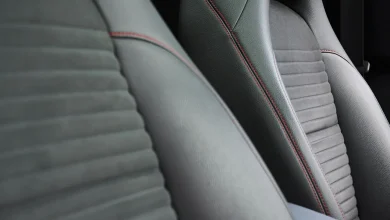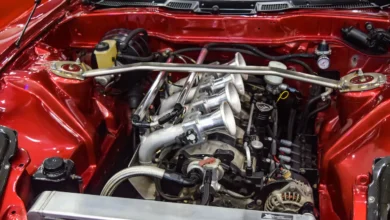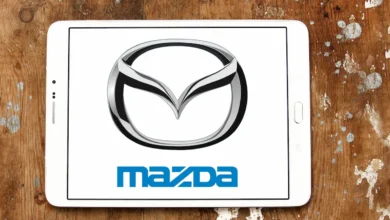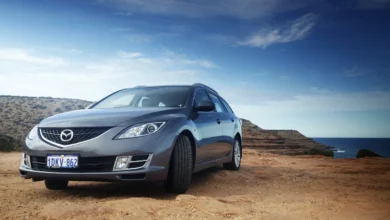Birth of Holden
Holden produced more than 34,000 vehicle bodies a year before the Great Depression.
This number dropped by over 20 times, to just 1,651 car bodies in a year. Holden had no choice but to hang on with all its teeth.
General Motors was a watchful angel for Holden. General Motors saved Holden, while thousands of businesses were falling by the wayside.
Holden was GM’s sole body manufacturer in Australia. They hoped Holden would capture the look and feel of the average Aussie Battler to help sell more cars.
General Motors began selling cars in Australia in 1902 and established an Oldsmobile dealership north of Adelaide, which still sells vehicles to this day (but sadly not Holdens).
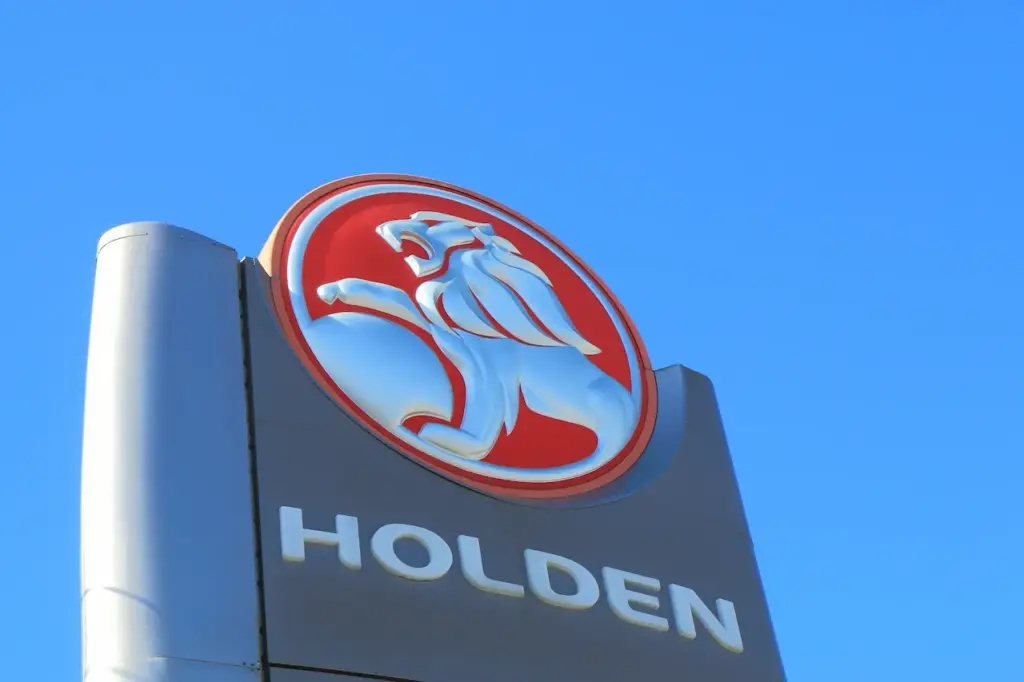
The US giant became involved in Holden for the first time in 1924.
the name ‘Holden’ is one of the most known Australian brands and the most iconic in the Australian automotive space. It began in 1856 when James Alexander Holden created a leather & saddlery business in Adelaide, South Australia. With the invention of the motored car, Holden’s moved fast and by 1914 had produced its first car body.
General Motors and Holden signed a contract in 1924 to manufacture car bodies exclusively for Holden’s vehicles.
‘Body by Holden’ had huge influence in the coming years. Holden ‘Motor Body Builders Limited’ was founded in 1917 and then merged with GM Australia in 1931 and then became General Motors-Holden’s Ltd.
General Motors increased its stake in Australia by combining with Holden Motor Bodies in 1931 to form General Motors Holden.
GMH began planning to produce motor vehicles locally in the mid-1930s, but World War II delayed these ambitions. The company began focusing its manufacturing expertise on supporting the military of the allied countries.
GMH could manufacture engines, chassis, and vehicle bodies on-site after the war. In 1946, the company began working on the first Holden.
The 48-215, also known as the Chevrolet Design, was a smaller version of the design that was abandoned in the US. It was ready to be produced by the end of 1948 after testing began in 1947.
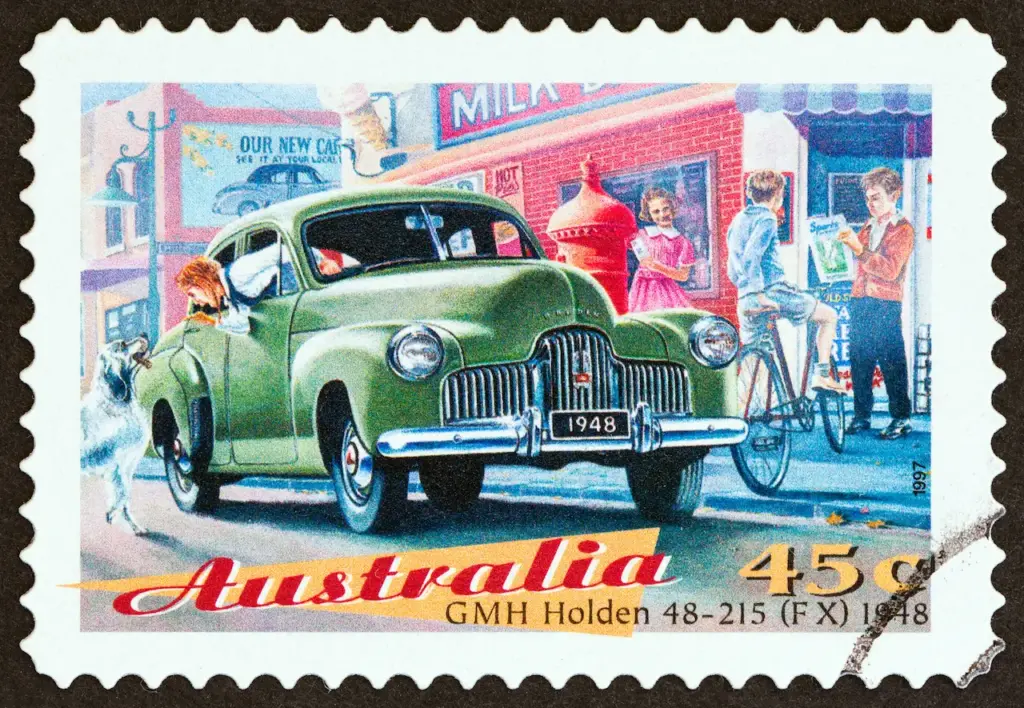
Want to read about expensive cars? Read: 50 Most Expensive Cars in the World
Ben Chifley, then the Prime Minister of Canada at the time, welcomed Holden’s first Canadian-made Holden in November 1948 and declared that “she is a beauty”.
Holden dominated the Australian auto market for the next 50 years and shaped the culture of the country. It accounted for half of new cars sold in the 1950s. The brand remained at the top or near the chart until 2002 when it was no longer the favourite car of the nation.
It will be the last car brand we have by 2020. That’s only 18 years since it was our most popular.
The Rise of Holden
Fast forward 6 years, to 1937. Holden is building more than 32,000 cars per year. They claim a huge 40% of the Australian market and have profits in excess of $1 million pounds.
This is over $130,000,000 in 2021’s valuation. Rumours about the first Australian automobile grew for many years, until Ben Chifley, Prime Minister of Australia in 1948, announced that the first Australian vehicle was the 48-215.
Holden FX is more commonly called Holden or Holden. The Holden FX is a stunning car that has catapulted Holden to dominance for 50 years.
Holden knew what the average Aussie was looking for in a car, and their first Holden model sold like hotcakes. The FX sold over 120,000 cars and was ranked number one in passenger car sales by 1950.
Holden continued to dominate the auto industry with iconic models like the Torana and Monaro. Eventually, they introduced the Commodore. The Monaro, which was released in 1968 for the first time, also gave them their first Bathurst 1000 win.
The Bathurst 1,000 is a 1,000-kilometre or 500-mile race that consists of 161 laps on the Mount Panorama Circuit.
Holden’s first Bathurst 1000 win sparked the idea to sell more cars on Monday by winning on Sunday.
You can win on Sunday, and sell more on Monday.
Holden has won the Bathurst 1000 20 times in the 50 years between 1950 and 2000. Holden’s peak sales were over 200,000 per year and accounted for almost 35% of all new car sales.
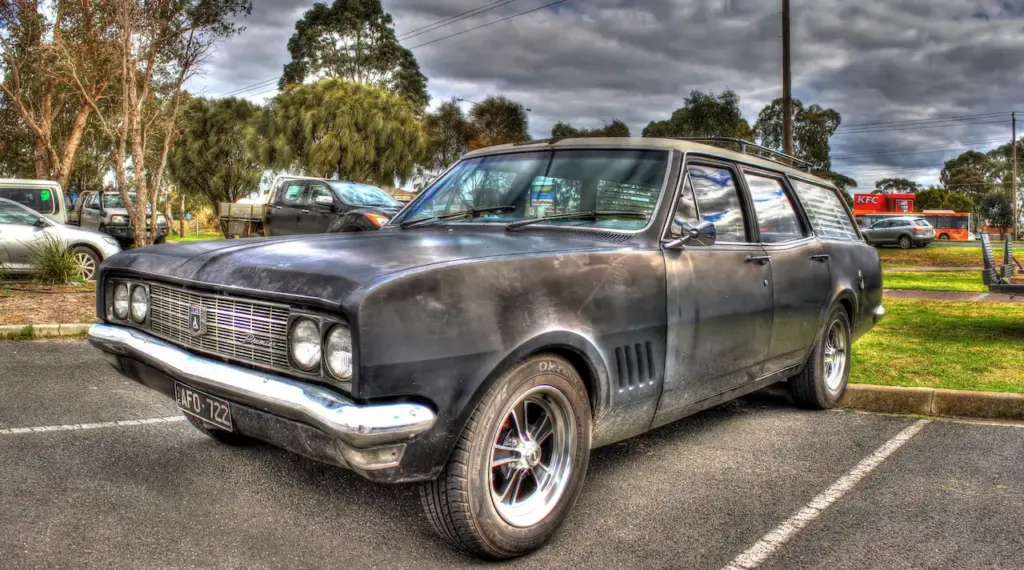
Learn more about reliable cars in Australia. Read: Most and least reliable car brands In Australia
A Timeline of the Holden Story
- 1856 – Holden opened a saddlery in Adelaide in 1856.
- 1908 – Holden expands business into vehicle upholstery.
- 1914 – Holden produced its first car body in 1914 using horse carriage construction techniques.
- 1918 – Holden produces 587 car bodies, but not the engine or chassis, steering, suspension, etc., as the automobile begins to overtake horse-and-cart.
- 1924 – General Motors and Holden sign a contract for the manufacture of local bodies exclusively on their cars.
- 1928 – Holden creates the famous “Lion and Stone” logo.
- 1931 – General Motors buys Holden, and establishes GMH.
- 1936 – Holden builds cars in Port Melbourne with US-made parts. General Motors executives begin to plan an Australian-made car.
- 1939 – General Motors puts on hold plans to build an Australian car as the world enters war. The factory instead supports the war effort.
- 1948 – Prime Minister Ben Chifley launched the first Holden in Port Melbourne on November 29, 1948, and declared “She is a beauty”. Before the first Holden was built, dealers held more than 18,000 orders. Price at new: $1466.
- 1953 – The FJ Holden is on sale for about $246.
- 1958 – Body Assembly Division at Elizabeth, South Australia begins.
- 1993 – Production of the iconic Holden EH begins: 256.959 units are produced in less than 2 years. This is the most popular Holden to date.
- 1965 – Holden Factory in Elizabeth starts full vehicle assembly.
- 1968 – The Holden Kingswood is introduced, the first V8 engine from Holden. This was popularized with the Monaro.
- 1971 – The HQ Kingswood is on sale. From 1971 to 1974, 485,650 Holden models were sold. This is the highest-selling model in Holden’s history.
- 1978 – The Holden Commodore was born. General Motors switched to a smaller car after two “oil crisis” in the 1970s. The Commodore was adapted from a General Motors sedan that originated in Germany.
- 1986 – Holden installs a Nissan six-cylinder engine imported from Japan under the VL Commodore’s bonnet. It is faster and more fuel-efficient than the V8. Holden sells the V8 as a “towing vehicle” and the 6-cylinder as a “performance vehicle”. As the Australian dollar falls, the Japanese engine is too expensive. Holden then comes up with a plan to use a V6 engine from GM for future models.
- 1987 – Peter Brock introduces an energy polarizer and installs it in his new HDT road car series. Holden, however, cannot verify Brock’s claim or prove any benefit despite numerous engineering tests. Holden parts company with the racing legend.
- 1989 – Holden changes its model-sharing agreement with Nissan to one with Toyota. Toyota received a version (called Lexcen) of the Commodore V6 in the federal government’s consolidation plan. Holden, on the other hand, gets two 4-cylinder cars, a locally-made Camry called Holden Apollo and a locally-made Toyota Corolla called Holden Nova.
- 1996 – After slow sales and increasing tensions on both sides, the model-sharing partnership between Holden Toyota and ends. The Commodore begins its 15-year reign as Australia’s favourite car.
- 1997 – Holden releases a new generation VT Commodore. It would become one of Holden’s most popular models ever, selling 303,895 units between 1997 and 2000. Holden went on to produce 207,339 VX Commodores from 2000 to 2002.
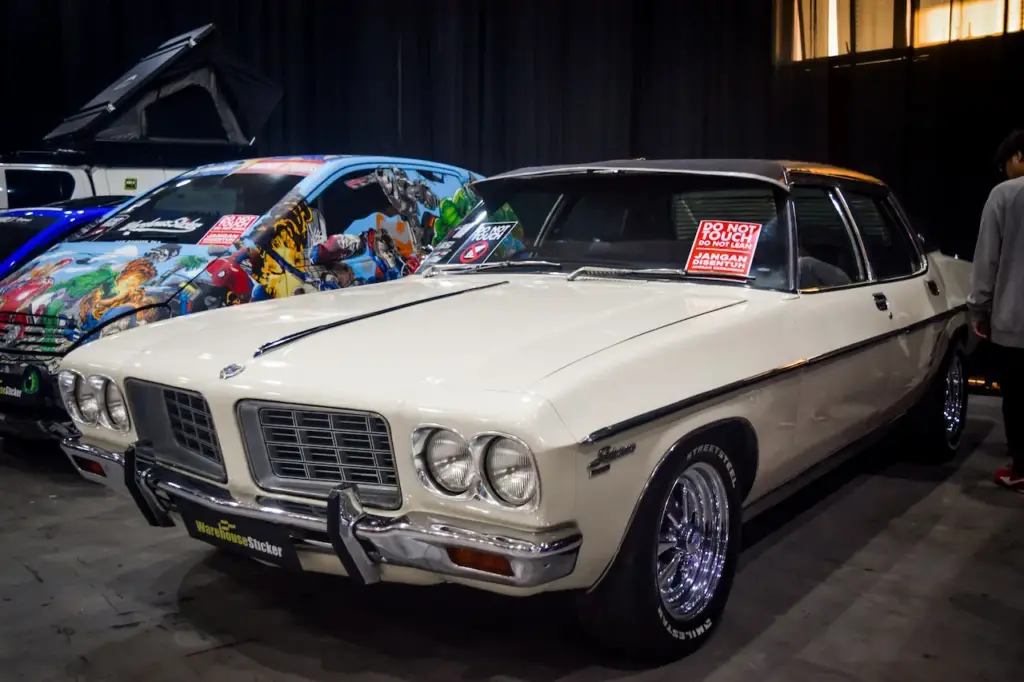
White Holden HQ Statesman in Black Auto Battle Yogyakarta 2023 - 1998 – Holden stunned the industry with a sleek, two-door Commodore Concept Car at the Sydney Motor Show. The original intention was to divert attention from the Ford Falcon. However, both the media and the public immediately dubbed it the modern Monaro. Holden, who had no intention to produce the car, begins crunching numbers in order to determine if they can make a viable business case.
- 2001 – The Holden Monaro will be available in December 2001. Detroit executives are so impressed by the car that they plan to export the left-hand drive versions of the vehicle to the US under the name Pontiac GTO.
- 2004/2005 – Holden exported 31,500 Monaros as Pontiac GTOs to the US, more than double the number of Monaros that were sold in the US over a four-year period.
- 2006 – Holden introduces its “billion dollar baby”, the VE Commodore and WM Caprice sedans. These vehicles, unlike every Commodore or Caprice that came before, were designed and engineered in Australia. These underpinnings will also be used to build the new Chevrolet Camaro, sold in the US but engineered in Australia by Holden. The Global Financial Crisis led to the cancellation of plans for a right-hand drive Camaro in Australia.
- 2007- 2009 – More than 41,000 Commodores were exported to North America under the Pontiac name between November 2007 and February 2009. This was almost equal to Holden’s annual Commodore sales at the time. However, the deal ended when the Pontiac label was axed due to the Global Financial Crisis.
- 2011 – Holden Cruze is produced alongside the Commodore at the Elizabeth factory after being imported from South Korea in June 2009. Prime Minister Julia Gillard attended the ceremony and drove the first Holden Cruze made in Australia off the production line.
- 2012 – Holden exports the Caprice limousine as a police vehicle to the US.
- 2013 – The new Holden Commodore VF was on sale the same month Ford announced that its factories would close in October 2016.
- October 2013 – Holden began exporting the Holden Commodore SS V8 Sports Sedan as a Chevrolet SS. The Commodore is the base for Chevrolet’s NASCAR and will be seen by the largest sporting audience in history.
- December 2013 – Treasurer Joe Hockey challenged Holden in Federal Parliament to “come out” about its future manufacturing plans with his speech “Either you are here or you are not”. Holden’s boss Mike Devereux announced Holden would close its manufacturing operation in 2017 days after Hockey’s address and a day after the Productivity Commission reviewed Holden.
- 7th October 2016 – The final Holden Cruze rolls from the Elizabeth production line on the same day that Ford closes Broadmeadows, Geelong and Broadmeadows.
- 29 Nov 2016 – Holden closes its Port Melbourne engine factory after 68 continuous years of operation, since 1948. More than 10,000,000 engines were produced.
- March 2017 – General Motors sold its European brands that were losing money (Vauxhall in the UK and Opel in Germany) to Peugeot Citroen. The French auto giant has said it will honour its commitment to supply Holden with the Commodore, Astra and other models. General Motors executives have denied rumours that there was a secret deal to bundle Holden along with Opel and Vauxhall.
- 20 Oct 2017 – Holden built its -and Australia’s – last car, a Holden Commodore v8 in a ceremony attended by 1,000 factory workers.
- November 2017 – Holden imports the new Opel Insignia with a four-cylinder engine or V6 and rebadges as a Commodore. For the first time in decades, there is no V8 model in Holden’s showroom.
- December 2017 – Holden launches the Equinox, a five-seat SUV designed to compete against the Toyota RAV4 or Mazda CX-5. Holden initially forecasted sales of 32, 000 per year. It has averaged less than 5,000 annually.
- October 2018 – Holden launches the Acadia, a seven-seater SUV of full size from the US. According to reports, the cost of factory conversion from left-hand drive to right-hand was $100 million. Since the conversion went on sale in 2010, less than 4000 vehicles have been sold, equating to an additional $25,000 for each right-hand drive car.
- December 2019 – After only 16 months, Holden’s Dave Buttner – a former Toyota Australia executive – will step down from his position on the 2nd of December. Kristian Aquilina is the interim chairman and managing Director of Holden. He has been with Holden for 22 years. Holden announced a week later that the Commodore would be removed from local showrooms. The model will also be phased out over the next few months as dealers sell off remaining stock.
- Early Jan 2020 – Holden’s official figures for 2019 show that the company has posted its lowest sales ever since 1954, with six of its lowest-ever monthly results since 1948.
- February 2021 – General Motors has announced that it will be leaving all markets with right-hand drives worldwide, and Holden dealers are expected to close their doors at the end of 2020.

